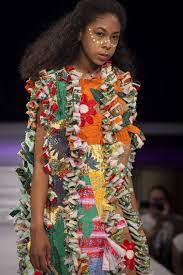The Rise of Eco Fashion: Sustainable Style for a Greener Future
In recent years, the fashion industry has seen a significant shift towards eco-friendly practices and sustainable materials. This movement, known as eco fashion, is gaining momentum as consumers become more conscious of the environmental impact of their clothing choices.
Eco fashion encompasses a wide range of practices aimed at reducing the carbon footprint of the fashion industry. This includes using organic and recycled materials, implementing ethical production processes, and promoting fair trade practices.
One of the key principles of eco fashion is to create clothing that is durable and long-lasting, reducing the need for frequent replacements. By investing in high-quality pieces that stand the test of time, consumers can contribute to a more sustainable fashion industry.
Many eco fashion brands are also committed to transparency in their supply chains, ensuring that their garments are produced in an environmentally friendly and socially responsible manner. This level of accountability helps consumers make informed choices about the clothes they buy.
From organic cotton t-shirts to recycled polyester jackets, eco fashion offers a wide range of stylish options for those looking to reduce their environmental impact. By supporting eco-friendly brands and embracing sustainable style choices, we can all play a part in creating a greener future for our planet.
Understanding Eco Fashion: Origins, Materials, Definition, and Benefits
- Who started eco fashion?
- What is eco fashion made from?
- What is meant by eco fashion?
- What are the benefits of eco fashion?
Who started eco fashion?
The concept of eco fashion, also known as sustainable fashion, has roots that date back several decades. While it is difficult to pinpoint a single individual or entity that started eco fashion, the movement gained traction in the late 20th century as environmental concerns became more prominent in society. Various designers, activists, and organisations have played key roles in promoting eco-friendly practices within the fashion industry, paving the way for a more sustainable approach to clothing production and consumption. Today, eco fashion continues to evolve and grow, with a growing number of brands and individuals embracing environmentally conscious principles in their designs and practices.
What is eco fashion made from?
Eco fashion is made from a variety of sustainable and environmentally friendly materials. Commonly used materials in eco fashion include organic cotton, hemp, bamboo, recycled polyester, and Tencel. These materials are chosen for their minimal impact on the environment compared to traditional fabrics like conventional cotton or synthetic fibres. By opting for these eco-friendly materials, fashion brands can reduce their carbon footprint and promote a more sustainable approach to clothing production.
What is meant by eco fashion?
Eco fashion, also known as sustainable fashion, refers to clothing and accessories that are designed and produced using environmentally friendly practices and materials. This includes using organic fabrics, recycled materials, and natural dyes to reduce the impact on the environment. Eco fashion also encompasses ethical production methods, fair trade practices, and transparent supply chains to ensure that garments are made in a socially responsible manner. By choosing eco fashion, consumers can support a more sustainable and ethical approach to clothing production while reducing their carbon footprint and contributing to a greener future for the planet.
What are the benefits of eco fashion?
Embracing eco fashion brings a multitude of benefits that extend beyond personal style. By choosing eco-friendly clothing made from sustainable materials, such as organic cotton or recycled polyester, individuals can significantly reduce their environmental footprint. Eco fashion also promotes ethical production practices, fair wages for workers, and transparency in the supply chain. Moreover, opting for durable and timeless pieces in eco fashion contributes to a more sustainable wardrobe, reducing the need for frequent replacements and ultimately saving resources. Overall, the benefits of eco fashion lie in its positive impact on the planet, society, and our individual choices towards a greener and more responsible future.

